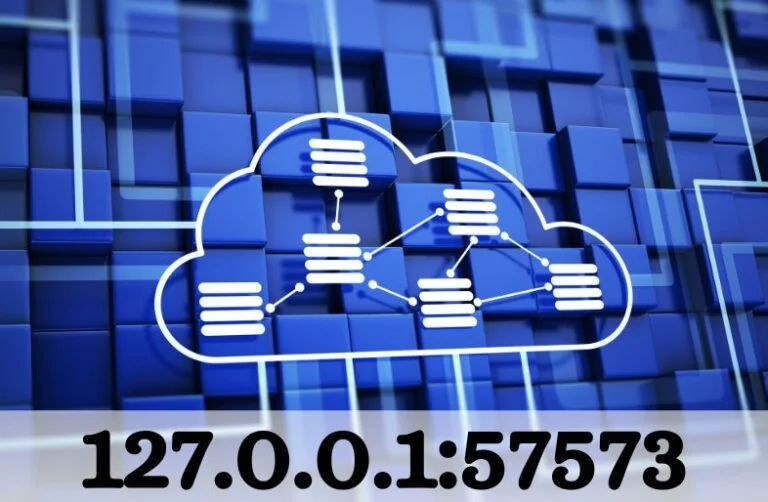
1. Introduction
When it comes to networking and web development, you might stumble upon the term 127.0.0.1:57573. At first glance, it might seem like a jumble of numbers and symbols, but it holds significant value in the world of software development and testing. In this article, we’ll unravel what this address means, how it operates, and why it’s crucial for developers. Whether you’re a beginner just dipping your toes into the coding pool or a seasoned coder looking for a refresher, understanding this can enhance your web applications significantly.
2. What is 127.0.0.1?
Let’s break it down. 127.0.0.1 is the loopback address in Internet Protocol (IP) networking. Essentially, it’s your computer talking to itself. Imagine you’re having a conversation with your reflection in the mirror—when you access this address, you’re engaging with your local machine rather than an external network. This is particularly useful for developers who want to test their applications without exposing them to the wider internet.
3. The Role of Ports in Networking
In networking, ports are like doors on your computer. They allow different types of data to enter and exit the machine. Each port number indicates a specific service or application. For example, port 80 is commonly used for HTTP (web traffic), while port 443 is used for HTTPS (secure web traffic). In our case, 57573 is a specific port that we’ll explore further in the article. Understanding ports is crucial because they define how your application communicates over the network.
4. Understanding Localhost
Localhost refers to the local machine you’re using. It’s a standard hostname that resolves to 127.0.0.1. This means when you type localhost into your web browser, you’re essentially saying, “Hey, show me what’s running on my computer right now.” This allows developers to test applications and websites on their devices before going live. Think of it as a playground where you can safely test your projects without affecting anyone else.
5. What Does 127.0.0.1:57573 Represent?
So, what does the full address 127.0.0.1:57573 signify? It indicates that you’re using your local machine to connect to a service running on port 57573. This could be a web server, an API, or any application that listens for connections on that port. Imagine sending a message to your home but specifically addressing it to a particular room—here, the room is the port. Understanding this structure is essential for developers, as it helps them know where their applications are running and how they communicate with them.
6. How to Access 127.0.0.1:57573
Accessing 127.0.0.1:57573 is straightforward. You can simply type it into your web browser’s address bar and hit enter. If there’s an application running on that port, it will respond, allowing you to interact with it. If nothing is running, you might encounter an error, like trying to open a door that’s locked.
If you’re developing a web application, you’ll often set up a local server that listens on a specific port. When you start that server, you can then visit 127.0.0.1:57573 to view your application in action. This is a common practice among developers and is a vital step in the development process.
7. Practical Uses of 127.0.0.1:57573
7.1. Web Application Testing
One of the primary uses of 127.0.0.1:57573 is testing web applications. Developers can run a local server to check how their web app behaves under different conditions. It’s an ideal scenario for troubleshooting and perfecting your code without risking a live environment. You get to play around with different features and fixes without the fear of breaking something that users rely on.
7.2. Network Configuration
127.0.0.1:57573 also plays a role in network configuration. For instance, if you’re setting up software that requires specific ports, knowing how to configure your local machine can save you time and headaches. You can set up firewalls, proxies, or VPNs to test how they interact with your local services.
7.3. Debugging Applications
When things go awry in your application, you can use 127.0.0.1:57573 to debug. Since the server runs locally, you can track down issues more efficiently. It’s like having a backstage pass to your app’s inner workings, allowing you to see everything that happens behind the scenes.
8. Common Issues with 127.0.0.1:57573
While using 127.0.0.1:57573 is generally smooth, you may encounter a few hiccups. One common issue is connection errors, where your application may not be running on the specified port. Other issues could include services not responding or problems related to firewalls blocking your requests. It’s essential to understand these potential pitfalls to troubleshoot effectively.
9. Troubleshooting Tips
9.1. Firewall Settings
If you’re having trouble connecting to 127.0.0.1:57573, the first place to check is your firewall settings. Firewalls can sometimes block access to certain ports, which can prevent your application from responding. Make sure that your firewall allows traffic on port 57573.
9.2. Browser Configurations
Sometimes, browser configurations can lead to issues when trying to access 127.0.0.1:57573. Ensure that you don’t have any browser extensions or settings that might interfere with local connections. Disabling proxy settings or VPNs temporarily might also help troubleshoot any access issues.
9.3. Software Conflicts
Another thing to consider is whether another application is already using port 57573. You can use tools to check what services are listening on which ports. If another application is occupying that port, you might need to stop it or change your application’s port to avoid conflicts.
10. Best Practices for Using 127.0.0.1:57573
To make the most out of 127.0.0.1:57573, keep the following best practices in mind:
- Use Version Control: Always use version control systems like Git. This way, if something goes wrong during your testing, you can roll back to a previous version easily.
- Document Your Setup: Document your local environment setup, including what services are running on which ports. This will help you or others who work on the project later understand the configuration.
- Regularly Test Your Application: Make it a habit to test your application frequently. This will help catch bugs early and improve the overall quality of your software.
- Keep Your Software Updated: Make sure that both your development tools and libraries are up to date. This minimizes the chance of running into compatibility issues down the line.
11. Conclusion
Understanding 127.0.0.1:57573 and its implications can significantly enhance your development workflow. This address serves as a critical tool for testing, debugging, and configuring applications on your local machine. By mastering this, you can develop more robust applications and troubleshoot issues efficiently.
So next time you encounter 127.0.0.1:57573, you’ll know exactly what it is and how to use it to your advantage. Dive in, experiment, and watch your web applications thrive!
12. FAQs
1. What is 127.0.0.1?
127.0.0.1 is the loopback address that allows your computer to communicate with itself, commonly known as localhost.
2. What does the port number signify?
The port number (like 57573) specifies which service or application is being accessed on the localhost.
3. How can I test my web application using 127.0.0.1?
You can run a local server that listens on a specified port and access it through 127.0.0.1:57573 in your web browser.
4. What should I do if I can’t access 127.0.0.1:57573?
Check your firewall settings, ensure no other applications are using that port, and verify your browser’s configuration.
5. Why is localhost important for developers?
Localhost allows developers to test and debug applications in a safe environment before deploying them to a live server.




